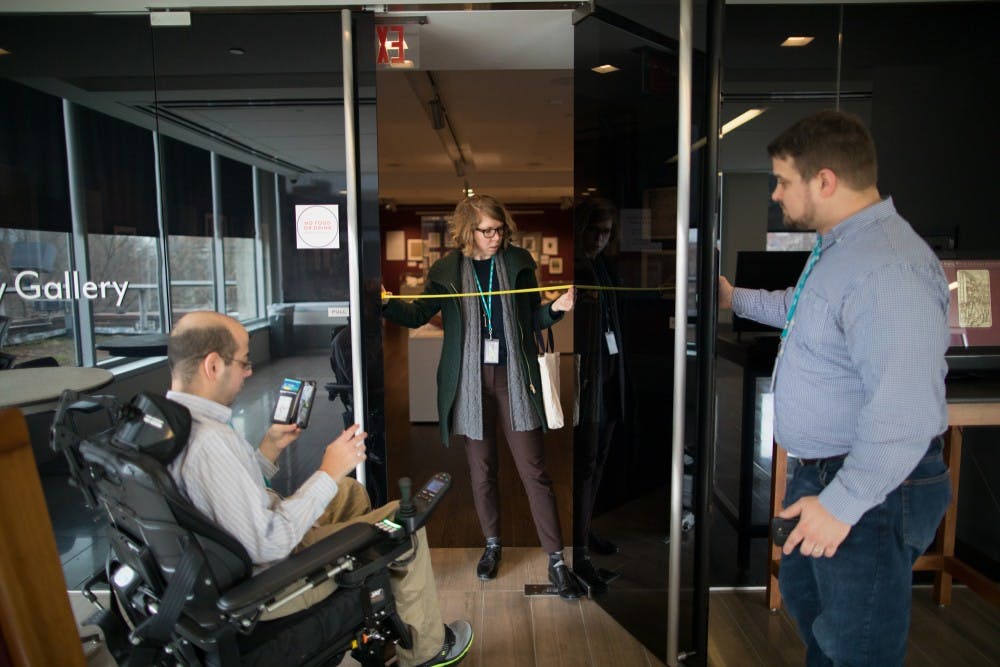When Penn graduate student Mark Bookman was in Japan researching Buddhism, he discovered that many of the temples he had to visit for field work were only accessible by stairs.
Bookman, now a third-year Ph.D candidate in Penn's East Asian Languages and Civilizations program, uses an electric wheelchair, and thus many of the sites were inaccessible to him.
With that trip in mind, he developed an interactive map of Penn in the fall that uses crowd-sourced data to make campus more accessible to those with disabilities and specific needs.
The new map, which Bookman dubbed the Accessibility Mapping Project, launched last month using data collected from around campus and drawing on Bookman's own academic research, which delves into issues of disability in Japan.
When Bookman looked at the maps available on Penn's home page, he found that they were lacking in comprehensive, intersectional accessibility information — a map showing wheelchair-accessible doors, for example, did not show what the door looked like or whether it was accessible to manual or electric wheelchairs.
(The maps have since been updated to include building-by-building information about elevator access and gender-neutral bathrooms.)

His resulting project uses pictures, audio, video, and text — rather than standardized diagrams — to represent different people’s understanding of access.
“At the end of the day what I wanted to design was [a map] really describing the spaces and giving us a much more rich understanding of what’s there,” Bookman said.
To collect such a large and diverse amount of data, AMP has been organizing “Map-A-Thon” events, open to the public, where participants will go around campus in groups, documenting different accessibility points to add to the map. The first event was held on March 2.
Bookman, who is the chair for equity and access on the Graduate and Professional School Assembly, has met with Penn President Amy Gutmann to talk about AMP, which he said will be included in New Student Orientation packets for the first time in the fall.
Girmay Misgna, Penn Libraries mapping expert, helped build the map from scratch, using the program ArcGIS, which lets the team input their own data and customize the result.
Previous accessibility maps have been "static," Misgna said, but AMP is “dynamic, and provides much more comprehensive information about accessibility," including locations of gender-neutral bathrooms and braille signage. The map includes photos uploaded by users, and updates its information in real time.
Alice McGrath, a postdoctoral fellow who works on accessibility at Penn Libraries, heard about AMP through some colleagues and ended up attending one of Bookman's presentations about it. She said she immediately wanted to get involved.
“I liked Mark’s approach,” McGrath said. “It just seemed like a really cool way to bring awareness on campus about accessibility, and also get more personalized information about how people experience different spaces.”
McGrath coordinates the data collection process and works with AMP’s project manager, Liberal and Professional School student Madhura Gurav, to develop the map on ArcGIS.
McGrath was also able to secure funding for the project from Penn Libraries.
AMP’s next Map-A-Thon is scheduled for March 28, with a third planned for April 20.



